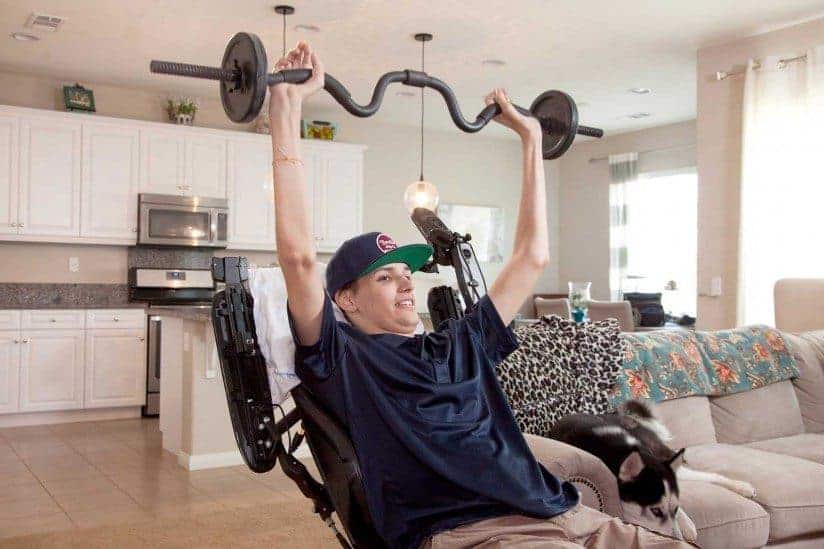Stem cell therapy helped a paralyzed man regain movement. But what’s that all about?
Stem cell medicine is a term that pops up from time to time. During the later stages of George W. Bush’s first term (end of 2004), the U.S. entered into a fierce debate over the use of stem cells and their effectiveness.
What is stem cell medicine?
We’ll simplify the process without turning this article into a research paper. There are two primary types of stem cells: embryonic and non-embryonic (or “adult”) stem cells.
- Embryonic cells are derived from a 3-day to 5-day old embryo, called a blastocyst.
- Adult stem cells are living cells derived from adult tissue.
Each type of stem cell has some potential to help. Embryonic stem cells “give rise to the entire body of the organism, including all of the (specialized) cell types and organs such as the heart, lungs, skin, sperm, eggs and other tissues.”
Adult stem cells within the bone marrow, brain, and muscle have shown some promise for “(generating) replacements for cells that are lost through normal wear and tear, injury, or disease.”
Kris Boesen’s Story
“With this study, we are testing a procedure that may improve neurological function, which could mean the difference between being permanently paralyzed and being able to use one’s arms and hands.” – Charles Liu, Program Director at the USC Neurorestoration Center
In March of 2016, just days before he was about to turn 21, Kris Boesen’s life took a dramatic turn for the worse. His car fishtailed on a wet road, hit a tree and struck a telephone pole.
Boesen suffered a cervical spine injury. He was paralyzed from the neck down.
Like most individuals who suffer spinal injuries, Boesen’s prognosis wasn’t good. Doctors prepared him and his parents for the possibility that the young man would never be able to move again.
The good news, if there were any to be gleaned from such a situation, was that young Kris qualified for a new clinical study that may help. Upon hearing this, Kris’ response echoed many that’ve been in a similar situation:
“All I’ve wanted from the beginning was a fighting chance.”
Enter the Neurorestoration Center at the University of Southern California (USC). The cutting-edge facility was developed to “(create) new strategies for the restoration of an injured or diseased nervous system.”
The procedure that Dr. Charles Liu and his surgical team would perform would inject an experimental dose of 10 million ‘AST-OPC1′ stem cells directly into Kris’ cervical spinal cord.
Dr. Liu explains the rationale for the treatment:
“Typically, spinal cord injury patients undergo surgery that stabilizes the spine, but does very little to restore motor or sensory function.” The procedure Dr. Liu and his team would try “could mean the difference between being permanently paralyzed and being able to use one’s arms and hands.”
The new procedure would have a life-changing impact. A short timeframe of Kris’ experience (post-surgery):
- 2 weeks: Kris’ fine motor skills improved (e.g. use of small muscles of fingers, toes, wrists, lips, and tongue.)
- 2 months: Kris’ motor movement was progressing rapidly.
- 3 months, Kris gained significant improvement in his various functions. “He’s able to feed himself, use his cell phone, write his name, operate a motorized wheelchair and hug his friends and family.”
The Paralyzed Young Man Made Amazing Progress
Doctors, naturally, are quick to temper any future expectations; particularly during the early stages of recovery from a new medical procedure. But the results are promising.
“If there’s a chance for me to walk again, heck yeah!”
Boesen is quite the resilient and optimistic character. He loved to repair and drive sports cars and worked on his life insurance licensure before his injury.
Per a video posted on Americans for Cures, courtesy of USC’s Keck School of Medicine, an obviously emotional Kris Boesen tells the camera:
“I was just existing. I wasn’t really living my life. And now, after the stem cell surgery, I’m able to live my life. If I was there and I was able to thank (Liu’s medical team), I would just tell them ‘Thank you. Thank you for allowing me to live my life again.”
Kris’ father was also thankful for Liu and his team, “So many things had to happen, and there were so many things that could have put up a roadblock,” he said. “The people at Keck Medical Center of USC and elsewhere moved heaven and earth to get things done. There was never a moment through all of this when we didn’t think our son was getting world-class care.”
And, Kris, well, he’s pumped. “If there’s a chance for me to walk again, then heck yeah! I want to do anything possible to do that.”
With the way he’s progressing, a pacing Kris Boesen may just be in the future.
Other stuff
– Kris’ treatment was made possible through California’s Proposition 71 – a $3 billion-dollar state program known as the California Initiative for Regenerative Medicine.
– Other beneficiaries of stem cell research include Evangelina Padilla Vaccaro, who was diagnosed with severe combined immunodeficiency disease. She is now disease-free.
– A big debate is underway in California whether or not to extend the program.
– For more information on the study, including eligibility and other info, please see the Keck School of Medicine of USC at http://keck.usc.edu/.












 Community
Community

